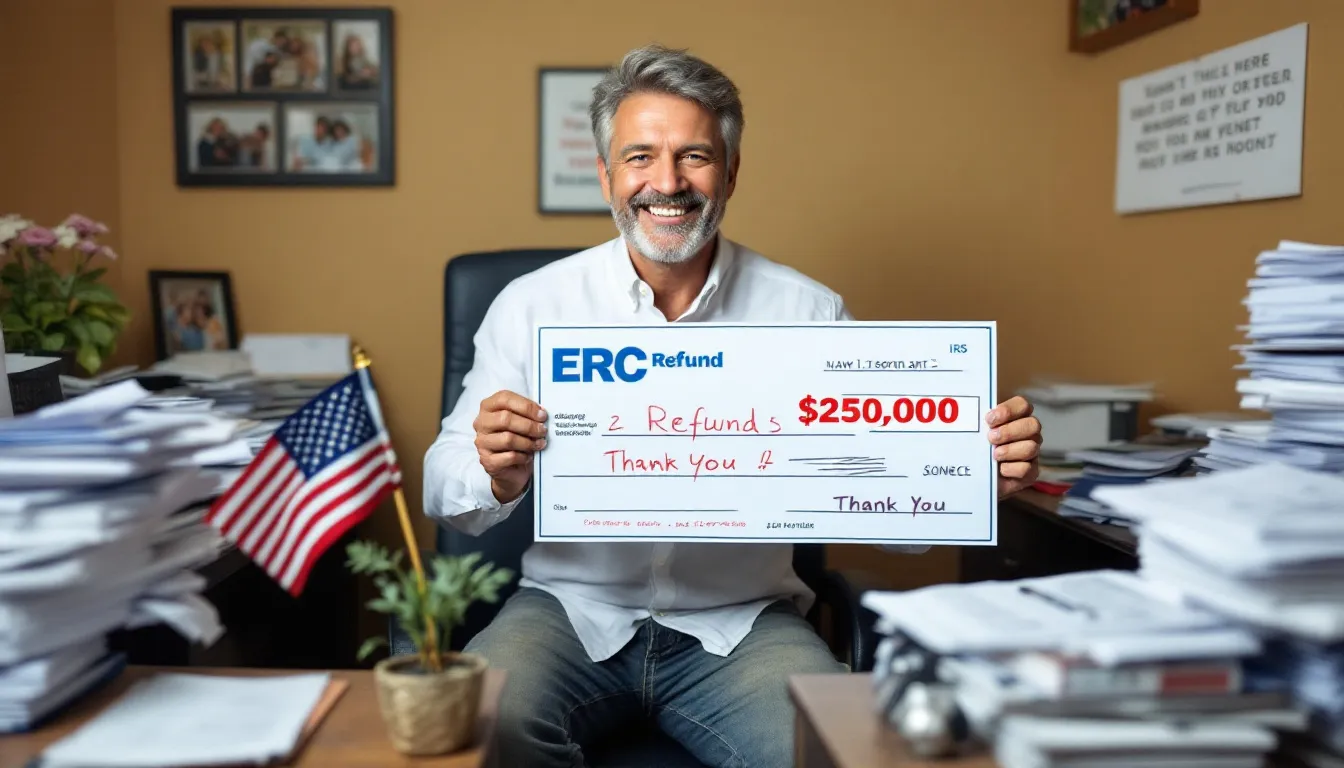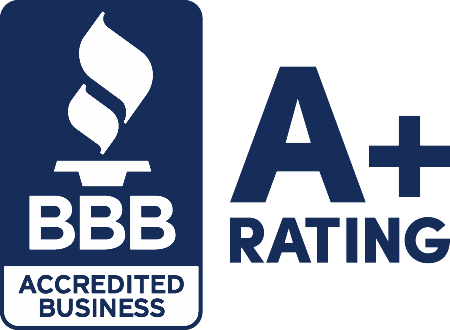What is the Employee Retention Tax Credit?
The Employee Retention Credit (ERC) is a refundable tax credit designed to encourage businesses to retain employees during the COVID-19 pandemic. Eligible employers can receive up to $26,000 per employee for qualified wages paid in 2020 and 2021.
The credit amount equals 50% of qualified wages paid between March 13, 2020, and December 31, 2020. From January 1, 2021, to September 30, 2021, the credit amount equals 70% of qualified wages paid. To claim the ERC, businesses must file amended payroll tax returns (Form 941-X). However, the IRS is experiencing significant processing delays due to high demand.
The ERTC aims to support businesses that experienced significant disruptions due to the pandemic, including those forced to suspend operations or saw a substantial decline in gross receipts. By providing financial relief, the ERTC helps businesses maintain their workforce during challenging times.
How Does the Employee Retention Credit Work?
The Employee Retention Credit is a refundable tax credit that eligible businesses can claim on their quarterly employment tax returns. The credit is calculated based on the qualified employee’s wages during the eligible period.
The IRS processes and approves small refund amounts faster than larger refund amounts. ERC refunds are claimed via an amended payroll tax return, Form 941-X, for each applicable qualifying quarter in 2020 and 2021.
For 2020, the credit equals 50% of qualified wages paid, up to $10,000 per employee annually. For 2021, the credit increases to 70% of qualified wages, up to $10,000 per employee per quarter. Businesses can claim the credit on an original or amended employment tax return and can request an advance payment of the credit by filing Form 7200. This flexibility allows businesses to receive the financial support they need more quickly.
Employers must decrease their deduction for eligible wages and qualified health plan expenses by the amount of the employee retention credit received. This essentially results in the credit being taxed, though it occurs through an amended tax return.
How do I Check my ERC Refund Status?
Many small business owners rely on their Employee Retention Credit (ERC) refund claim to support operations. Whether you’re trying to fuel growth or get caught up on debt incurred during the pandemic, the money could be a much-needed lifeline. Have your business tax return information ready before contacting the IRS.
Businesses need to submit amended tax returns to claim the ERC refund. If you’ve already filed, you might wonder, “Where’s my refund?” Unfortunately, the Internal Revenue Service doesn’t provide a convenient online tool to check the status of ERC refunds the way it does for personal income tax refunds.
Note: Some online resources state you can check your status online at the IRS website, but the IRS hasn’t confirmed businesses can track Employee Retention Credit refunds online.
Instead, there are only two possible ways to check your status.
Call The IRS
The most direct way to check your IRS ERC refund status is to call the IRS at 1-877-777-4778. If you filed independently, it’s also the only way to check. For questions other than ERC refunds, such as individual income tax return status, call 1-800-829-4933.
However, you might have difficulty getting hold of an IRS representative for information on your refund status through phone calls. Many business owners have mentioned long hold times when trying to contact the IRS. You can also try calling the IRS Business Specialty & Tax Line at 1-800-829-4933 if you have difficulty reaching a live agent.
In addition, an IRS agent can only give you a status update if it has processed your Form 941-X. If you only recently sent it in, it might not have arrived or been entered into the system.
Be prepared to provide identifying information, such as:
- Your legal name.
- Filing status.
- Federal identification number.
- Your relationship to the business (owner, accountant, consultant, etc.)
- The business’s postal address.
- Year of formation.
- The type of tax return filed for the firm.
Third-Party Consultation
Due to the complications around ERC refunds, many businesses have hired consultancy firms or used a third-party ERC filing service to file their amended 941x and claim the credit. In those cases, you can speak with the tax firm or consultancy service that filed on your behalf.
How long does it take to Get My ERC Refund?
The IRS’s current timeline for processing refund requests is 12+ months. The agency recently announced it’s slowing down the ERC refund processing time to identify incorrect or fraudulent claims better.
That means receiving your refund may take over a year if you file today. The wait times are far from the IRS’s initial 4–8-week processing time. As of August 2, 2023, the IRS has about 511,000 unprocessed Forms 941-X.
ERC Delays
Current ERC refund delays are due to several reasons. The IRS is dealing with a backlog of unprocessed payroll tax returns. There are several contributing factors to the employee retention credit refund requests backlog.
Paper Applications & Snail Mail: Unlike other tax documents that can be filed online, businesses must fill out tax Form 941x on paper and mail it. You can send it by rush order, but the IRS will still take longer to receive it than an electronic submission.
Manual Processing & Understaffing: Due to the complexity of ERC refunds and Form 941x, the IRS maintains a specialized ERC team that manually processes the requests. The agency has had staffing issues recently, so the manual process takes longer.
IRS Slowing Processing: As mentioned, the IRS announced it’s slowing down its process of approving ERC claims and issuing refund checks. Part of the reason for the further delays is that ERC refunds are currently triple the estimated amounts. The IRS states that erroneous and fraudulent ERC claims are the reason.
While it’s understandable that the agency would want to crack down on fraud, that doesn’t help the many businesses that filed correctly and are waiting for their legitimate refund. The IRS also conducts civil and criminal investigations to identify and prevent fraudulent claims. If six months have passed since the submission of Form 941-X, taxpayers can file a federal suit to force the IRS to pay their ERC refund.
IRS Audits and Disallowance Letters
The IRS has intensified audits of ERC claims to ensure compliance. Recently, the IRS sent 28,000 disallowance letters to businesses whose claims showed a high risk of being incorrect. These letters, known as Letter 105-C, inform businesses of the disallowance and provide information on how to appeal the decision.
Taxpayers receiving a disallowance letter have the right to initiate a formal appeal process. If an ERC refund is disallowed, a company may appeal the disallowance within 30 days of receiving the denial letter. Taxpayers who do not respond to a denial letter within 30 days forfeit their right to an administrative appeal. Reviewing your claim for accuracy and maintaining thorough documentation to support your eligibility is crucial.
Businesses can withdraw their claim if they later determine they might not be eligible for the tax credit. The IRS provides a process for withdrawing unprocessed claims, which can help avoid potential penalties or audits. If you believe your claim was submitted in error, consult a tax professional to initiate withdrawal.
How will I receive my ERC Refund?
The IRS usually issues a check for the refund amount, which is mailed to your business address on file. Notice CP210 will likely accompany the check.
The notice provides information about your refund. It also explains discrepancies between the check amount and the refund, if any. Some reviews suggest getting it by direct deposit is possible, but we’ve mostly seen the refund sent as a check.
Can I get my ERC Refund Expedited?
Unfortunately, the IRS does not provide an expedited process. Once you file, you must wait until your check shows up in the mail, which could take up to or over a year with the current delays.
The IRS allowed certain advance payments using Form 7200 during the COVID-19 pandemic. However, it stopped accepting Form 7200 after January 31, 2022.
If you haven’t filed yet, the best thing you can do is ensure your Form 941x is error-free. Mistakes can cause processing delays that could further delay receiving the refund check.
Is there any way to Get ERC Funds sooner?
While the IRS doesn’t provide any method to get your funds sooner, several financial institutions offer ERC loans, also called ERC advances. Keep in mind that these options require paying either interest or fees.
However, it does mean getting your funds much sooner, typically in a couple of weeks. Financing companies offer ERTC advances so you can access and use the funds to support and grow your business. This process essentially sells your ERTC ownership in exchange for an advance.
When the IRS issues the employee retention credit refund check, it goes to the lender to repay the advance. Some lenders will charge a small monthly interest rate until the check is received, while others might charge a one-time fee.
Ensure you fully understand the advance payment policy before signing over ownership of the credit.
ERTC Advance Pros & Cons
Pros:
- You get to access your refund sooner.
- You can use the funds to cover operational expenses.
- Potential tax deduction on interest.
Cons:
- You’ll have to pay interest on the advance.
- Must reconcile the ERC advance against the actual ERC at the end of the quarter.
- Requires extensive documentation.
How do I apply for an ERC Advance?
Follow these steps to request advance payments for ERC through United Capital Source.
Step 1: File for your ERC with the IRS
If you haven’t already done so, the first step is to file for your ERC. You can file independently, or our dedicated ERTC experts can help you complete the filing process and get the maximum credit possible.
Step 2: Gather your documents.
You’ll need the following documents when you request an ERC advance payment:
- A completed application.
- IRS Form 8821 & 7216.
- For each quarter filed, IRS Form 941 (original) and 941x (amended).
- ERC calculations.
- Documentation for ERC qualification from the filer.
- 941s for the two most recent quarters.
- Government ID for all business owners with a 20% stake or greater.
- Most recent business tax return.
- Bank statements for the previous three months.
- An adjusted employment tax return (if required).
You will also need to provide the following after approval but before funding:
- W-9 by the authorized signer(s).
- Copy of your operating agreement.
- Voided check from your business bank account.
Step 3: Complete the application.
You can download the application form or visit the application page to complete the process.
Step 4: Consult with an ERC expert.
One of our funding experts will reach out to discuss your advance payment application. The call will cover the refund amount, the timeline for receiving your advance, and any associated costs.
Step 5: Accept and get your funds.
Once we finalize the application process, you can expect to receive your funds according to the discussed timeline. Repayment occurs when we receive the ERC refund check from the IRS.
Frequently Asked Questions
Here are the most common questions about ERC refund requests.
What is the ERC Refund Process?
The Employee Retention Tax Credit (ERC) was a refundable tax credit established by the Coronavirus Aid, Relief, and Economic Security (CARES) Act to incentivize businesses to retain employees during the COVID-19 pandemic. It’s also sometimes called the Employee Retention Tax Credit (ERTC).
Payroll costs cannot be counted towards the ERC if they were already reported for PPP loan forgiveness, highlighting the importance of maintaining accurate records.
Eligible employers included those ordered to shut down by a local government or that experienced a reduction in receipts by 50% or more during the corresponding month in 2019. Businesses that were not in operation in 2019 can’t claim the credit.
Under the tax provision, eligible businesses could claim a refund for qualified wages paid during the pandemic. The provision underwent several changes and adjustments since its initial implementation under the CARES Act.
Refund Summary and Notice CP210
When the Internal Revenue Service (IRS) processes an Employee Retention Credit (ERC) refund, it issues a Notice CP210. This notice summarizes the refund amount and details how the refund was calculated. The Notice CP210 includes the following information:
- The total refund amount
- The non-refundable portion of the credit (categorized as a “Tax-Decrease”)
- The refundable portion of the credit (categorized as “Credits – Increase”)
- A summary of the qualified wages and payroll taxes used to calculate the credit
It’s essential to carefully review Notice CP210 to ensure the refund amount is accurate and understand how the credit was calculated. If there are any discrepancies or errors, businesses should contact the IRS promptly to resolve the issue.
In some cases, the IRS may issue a refund check without a Notice CP210. In these situations, the check will include a memo that provides information on reconciling the refund amount to the original ERC claim. Businesses should carefully review the check and memo to ensure the refund amount is accurate and understand how the credit was calculated. This step is crucial to ensure that businesses receive the correct amount of financial relief they are entitled to under the ERC program.
Is my Business Eligible for an Employee Retention Credit?
The qualifications for an eligible employer depend on the tax period during which the qualified wages were paid. Eligible employers include private sector businesses and tax-exempt organizations.
Businesses with 100 or fewer full-time employees can claim the ERC for all wages paid during the eligible period. Businesses with more than 100 full-time employees can only claim the credit for wages paid to employees who didn’t perform services due to suspension or decline in business.
Qualifying Businesses and Qualified Wages March 13, 2020, to December 31, 2020
To receive the ERC for qualified wages paid during this period, your business must have carried on trade or have been a tax-exempt organization that:
- Was ordered to partially or fully shut down by a government authority, or
- Experienced a decline of 50% or more in gross receipts for the corresponding quarter in 2019 due to COVID-19-related decline.
Qualifying Businesses January 1, 2021, to September 30, 2021
To receive the ERC for qualified wages paid during this period, your business must meet the following conditions:
- An appropriate government authority ordered a full or partial shutdown of business operations or
- Experience a decline of 80% in gross receipts for the corresponding quarter in 2019 due to the COVID-related decline.
Qualifying Businesses October 1, 2021, to December 31, 2021
Most businesses do not qualify for the ERC on wages paid during Q4 2021. The sole exception applies to recovery startup businesses. The IIJA amended section 3134 of the Internal Revenue Code to exclude all companies except recovery startups as defined in section 3134(c)(5).
If you reduced employment tax deposits for Q4 2021 wages on or before December 20, 2021, consult with your tax professional to see if you are exempt from the “failure to deposit” penalty.
How can I file an ERC Refund?
Businesses must file Form 941-X to claim the employee retention credit for applicable quarters. Taxpayers must submit an amended federal income tax return for the tax year 2020, or an administrative adjustment request (AAR), when applicable, to adjust and reduce deductions related to any employee retention credits claimed for that year.
Due to the high volume of claims, the average ERC refund processing time has significantly increased, with wait times reported between four and twelve months. As of August 2023, the IRS’s total inventory of unprocessed Forms 941-X is approximately 511,000. This backlog has led to extended delays in issuing refunds.
Businesses can apply for wage credit during the active period (March 13- 2020-September 30, 2021, for most companies). You can consult your accountant or tax pro on completing forms 941 and 941x for an amended payroll tax return, or we can help you file for the ERTC with a free consultation.
With over 170 pages of documentation, the ERTC can be complex and confusing to digest. UCS has created a fast, stress-free process so businesses can receive the maximum amount available through the ERTC.
How to Check ERC Refund Status – Final Thoughts
The ERC Refund can provide businesses with much-needed relief, but the delays and complications can be a headache. The only definitive way to check your refund status is to call the IRS and deal with their long wait times.
Businesses that use a consultant or ERC service could also contact them about the status. However, there’s no way to expedite, and the current delays in receiving the refund are 9- 12+ months.
Contact us if you have more questions about filing for an ERC refund, checking your refund status, or applying for an ERC advance. Our business funding experts can answer any questions or guide on applying for a small business loan if you need funds before the check arrives.














